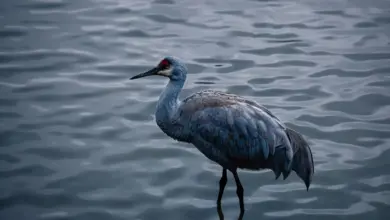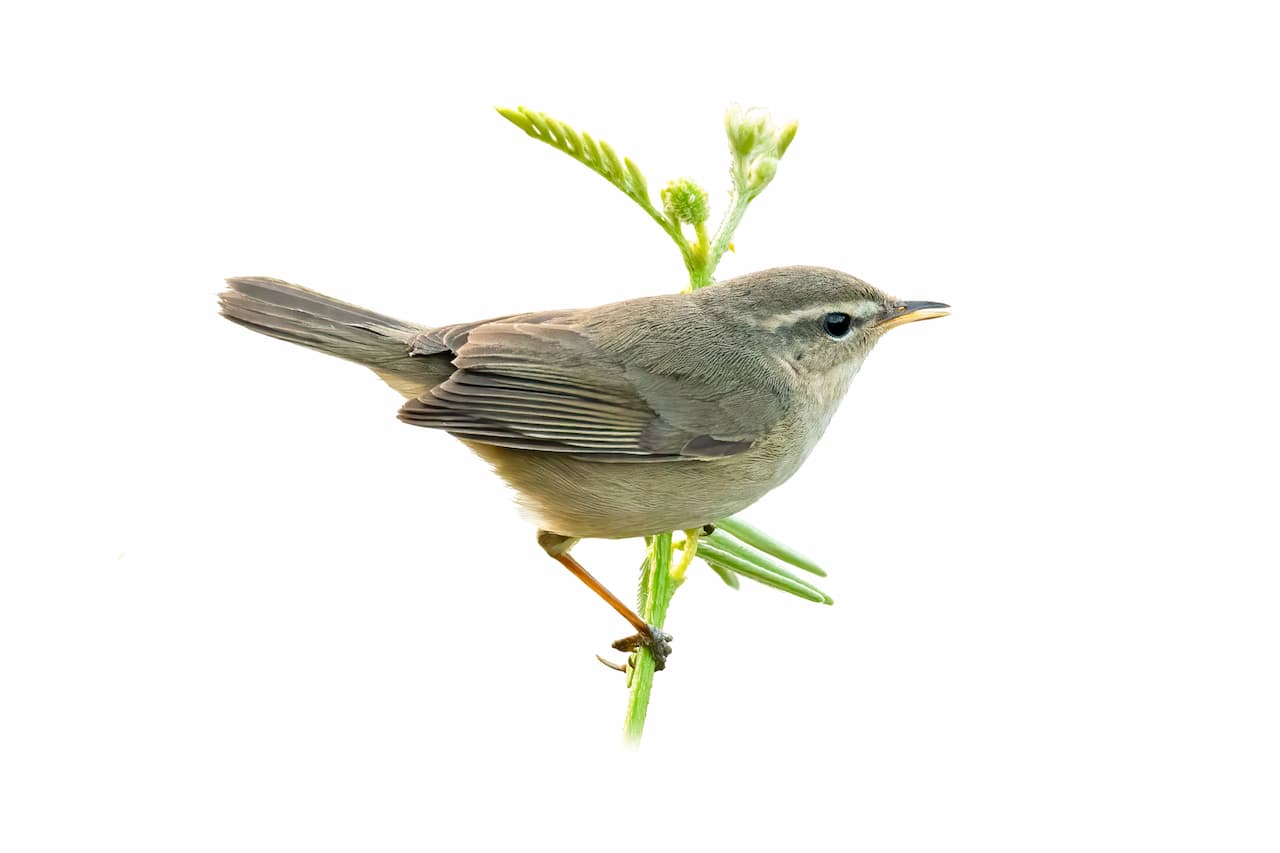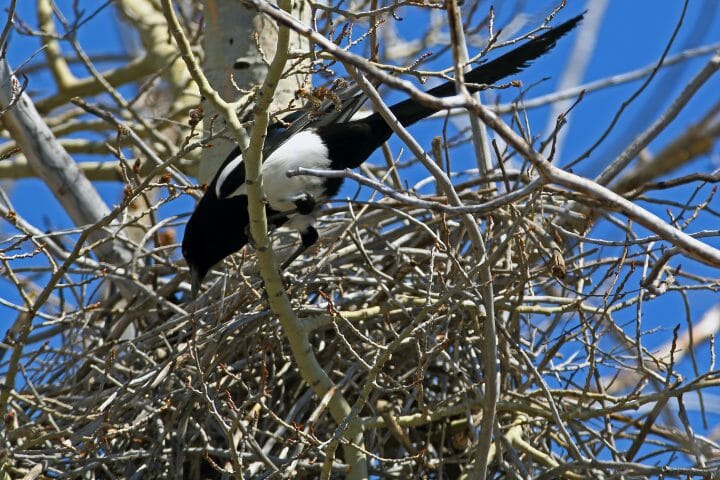The Whip-poor-will or whippoorwill (Caprimulgus vociferus) is a medium-sized nightjar that occurs from Canada south to Central America. It has been named for their calls that sound like “Whip poor Will.”
The Whip-poor-will is a member of the nightjar or “goatsucker” family – so named as they were once believed to drink a nanny goat’s milk during the night.
The Whip-poor-will is commonly heard within its range, but less often seen – due to its nocturnal habits. Its brown-mottled plumage keeps it well camouflaged during the day when it is also usually hidden away from sleeping.
It is suspected that the Whip-poor-will can enter torpor (hibernation) like the related Common Poorwill (Phalaenoptilus nuttallii) in response to harsh environmental conditions. However, this has not been proven yet.

Distribution / Range
The Whip-poor-wills are mostly migratory birds – migrations usually take place at night.
During the summer, they breed in deciduous or mixed woods across extreme southeastern Canada, south to Kansas, northern Louisiana and northern Georgia, western Texas, New Mexico and Arizona (eastern and southern United States), and south to Central America.
Northern populations migrate south to winter in the extreme southeastern United States, Mexico, and Central America. A few occur in the West Indies (a large group of islands that separate the Caribbean Sea from the Atlantic Ocean – located south of the Bahamas).
Eastern birds winter from South Carolina, USA along the Gulf of Mexico to Guatemala; and the western birds generally winter in central Mexico. Southwestern birds are probably only short-distance migrants.
The Central American races are largely resident (remain year-round) and are beautiful birds.
Whip-poor-wills breed in rich moist forests (either deciduous or mixed), especially young second-growth forests, with little or no underbrush. In the West, they are often found in pine-oak woods in mountains and canyons. They usually prefer dry woods near fields or other open areas and typically avoid purely coniferous forests.
They are native to the following countries:
Canada (Maritime Provinces: New Brunswick, Nova Scotia and Prince Edward Island), United States (Kansas, Louisiana, Georgia, Arizona, New Mexico, Texas, Florida), Belize; Costa Rica; Cuba; El Salvador; Guatemala; Honduras; Mexico; Nicaragua; Panama
They are vagrants to:
Saint Pierre and Miquelon – a group of small French islands in the North Atlantic Ocean about 10 kilometres (6.2 mi) from Newfoundland (Green Island)
They possibly occur in (unverified):
Jamaica – an island nation in the Caribbean Sea
Subspecies and Ranges
- Caprimulgus vociferus vociferus (Wilson, 1812) – Nominate Race
- Range: South-central and southeastern Canada south to east-central and eastern USA; winters from south-central and southeastern USA through Central America.
- Mexican Whip-poor-will – Caprimulgus vociferus arizonae (Brewster, 1881)
- Range: Southwestern USA (including western Texas, New Mexico, Arizona, California, and Nevada), south to central Mexico; winters in central Mexico.
- Caprimulgus vociferus setosus (van Rossem, 1934)
- Range: Eastern Mexico
- Caprimulgus vociferus oaxacae (Nelson, 1900)
- Range: Southwestern Mexico.
- Caprimulgus vociferus chiapensis (Nelson, 1900)
- Range: Southeastern Mexico and the highlands of Guatemala.
- Caprimulgus vociferus vermiculatus (Dickey and van Rossem, 1928)
- Range: Highlands of Honduras and El Salvador
Description / Appearance
The Whip-poor-will is a medium-sized nightjar (about the size of a Robin) that averages 8.7 – 10.6 in (22 – 27 cm) in length (including the medium-long tail). It has a wingspan of 17.7 – 18.9 in (45 – 48 cm) and weighs 1.5 – 2.3 oz (43 – 64 g).
It has a large head and a very short bill. Their feet are weak and their legs short – and they usually hop about awkwardly on the ground. Its plumage is a camouflaging pattern of leaf-browns, black and greys. The under plumage is mottled heavily with grey, black, and brown; and the plumage below is mottled grey and black. It has a black throat. They have rounded wings – reminiscent of the wings of a large brown moth.
Given their cryptic appearance, these birds blend perfectly into their habitat. Hence they are very difficult to spot during the daytime, when they are generally hidden away sleeping. They are most commonly seen at night when light from car headlights is reflected ruby-red from their eyes, as they are sitting on roads or tracks. However, their presence is most often made known by their loud calls given at dusk.
Adult Male: He has a white patch below the black throat. His outer three tail feathers have broad white tips that are most visible in flight.
Adult Female: She has a light brown patch below the black throat. Her tail is brown, with narrow buffy tips on the outer three tail feathers.
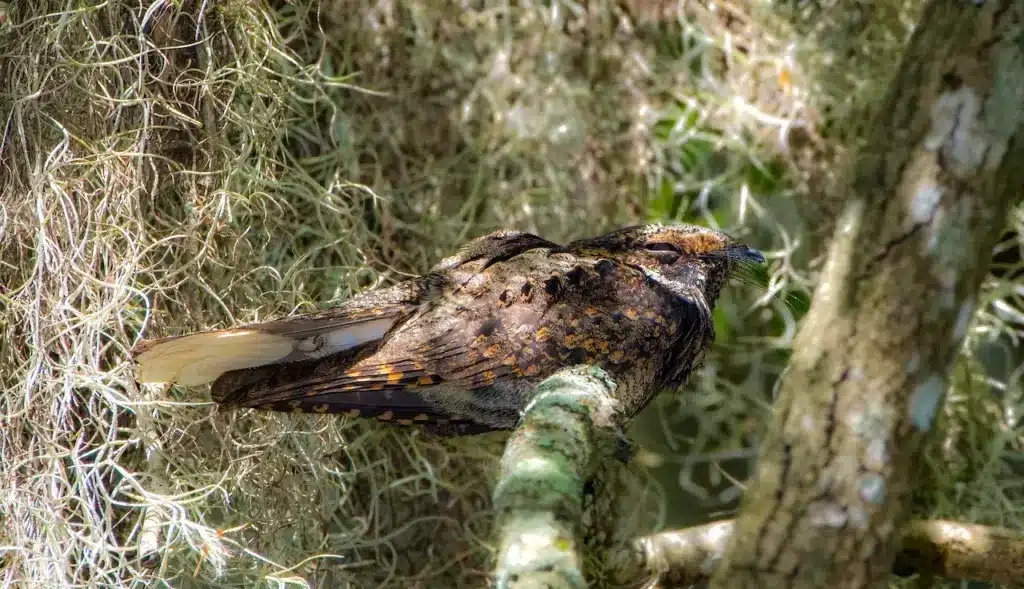
Regional physical differences:
- In 2010, the Whip-poor-will populations were officially split into Eastern and Western species (Mexican Whip-poor-will) based on these differences between the western and eastern forms:
- Slight differences in plumage colouration and the western populations are a little larger.
- The eastern populations’ song is a three-part “WHIP-poor- WEEA” with the first and last syllables being accented and the last note rising in pitch. The western birds’ song is lower pitched, sounding more thrilled, and only the last note is accented.
- The eggs are whiter.
Immature birds resemble the adult.
Similar Species:
- All other nighthawks have pale wing patches that are mostly seen in flight (which the Whip-poor-will lacks). All nighthawks, except the Whip-poor-will, also have long pointed wings.
- All nightjars can easily be identified by their distinctive songs for which they typically have been named.
- The Whip-poor-will is larger than the Common Poorwill, and the Common Poorwill’s wings extend to the tail at rest.
- The Chuck-will’s-widow is significantly larger (3 to 4 times the weight of a Whip-Poor-Will), and longer-tailed and the plumage is a rich brown rather than grey. The throat is buff in the Chuck-will’s-widow and black in the Whip-poor-will. The Whip-poor-wills have less pointed wings. The Whip-poor-willl’s outer tail feathers have white tips that are visible when the tail is spread. The Chuck-will’s-widows only have white on the inner half of these tail feathers, with the tail appearing much less white.
- gusgrosch Gus GroschSubject: Re: Whip-poor-willSure, but again credit Seabiscuit Wildlife shelter. You might mention the size difference between Whippoorwills and Chuck-wills-widows (chucks are about 3 to 4 times the weight). I think the white feather is also indicative of the whip-poor-will.
Diet / Feeding
Whip-poor-wills typically forage at dusk and dawn and, to a lesser extent, during moonlit periods of the night. They mostly feed on night-flying insects, including moths, mosquitoes, and flying beetles. They will also pick non-flying insects such as grasshoppers, ants, and crickets from the ground.
At dusk, they often fly around livestock to feed on insects swarming around the animals. At night. they like to take advantage of insects swarming around street lamps.
They capture insects by flying out from a perch and catching them mid-air as the insects are close to their perch or in continuous flight, wheeling, circling, sometimes gliding, or even hovering above the insects before striking.
They drink while flying slowly over a water surface scooping up water with their wide beak.
Like other nightjars, they have special physical adaptations that facilitate foraging at night and catching prey in mid-air, for example:
- The beak has evolved to be much wider than it is long, and it opens wide both – vertically as well as horizontally. The resulting big gaping mouth allows it to more easily scoop up insects in flight.
- Its large eyes are placed on each side of the head (laterally) – which significantly increases its visual field.
- A reflective membrane behind the retina (tapetum) enhances its vision at night by augmenting the light-gathering ability of its eyes.
- They also have forward-facing whiskers that may either help them funnel food into the mouth or protect the eyes.
Folklore
In the past, night-flying birds – such as the Whip-poor-wills – have had a somewhat sinister reputation and were even suspected of witchery.
The Mohegan Tribe held the belief that makiwasug (magical little people) travelled through the forest at night in the shape of whip-poor wills.
According to Reverend Samuel Andrew Peters’ book “General History of Connecticut” (1781), Whip-poor-wills were able to predict storms.
According to the beliefs of Native Americans and American folklore, the singing of the Whip-poor-will is a death omen. Author Clifton Johnson stated that if a whip-poor-will’s calls are heard near a house, it would be a sign of impending death.
H.P. Lovecraft’s story “The Dunwich Horror” spread the belief that the Whip-poor-wills can sense impending death and will remain close to catching the departing soul as it leaves the body.
“It is whispered that they linger and flutter around houses where death is approaching, hoping to catch the soul of the departed as it leaves” (“The Thing on the Doorstep and Other Weird Stories”, by H.P. Lovecraft, S.T. Joshi. New York, Penguin Books, 2001)
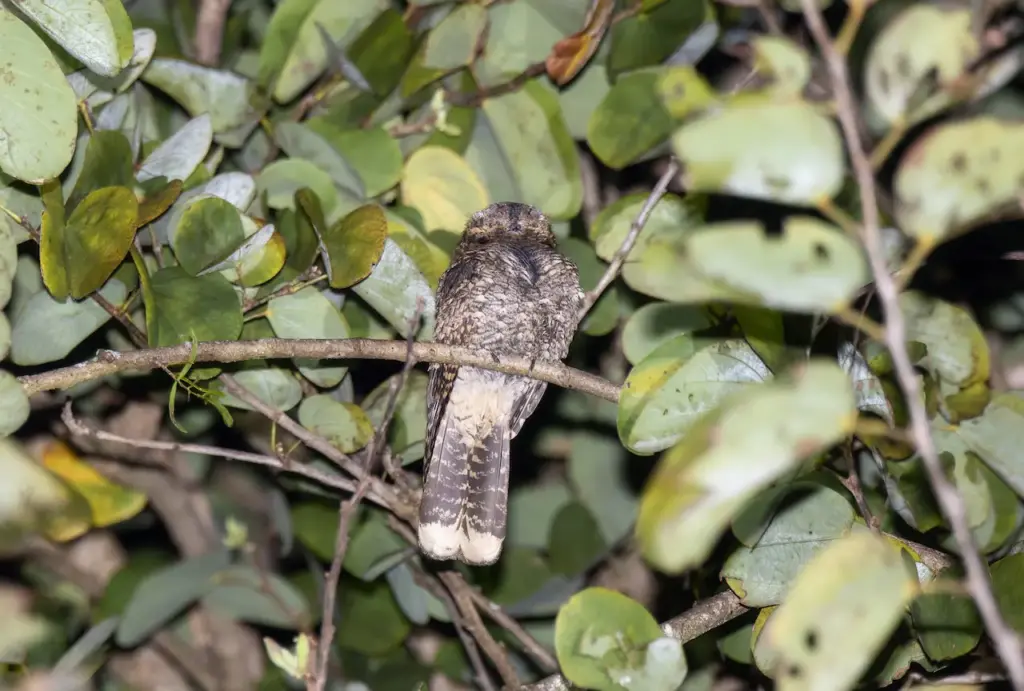
Reproduction / Nesting
Most nesting activities occur from May and June. The male establishes his territory and sings at night to keep rivals away and at the same time to attract a female. As part of the elaborate courtship display, the male approaches the female on the ground, with a dance that includes him circling her as she bobs her head, while both birds call continuously out. He may also approach her from alternating sides, touching her beak as he reaches her. This courtship display leads up to the actual mating.
Whip-poor-wills don’t construct a nest, as most other bird species do. They simply place the eggs on the ground on open soil covered with dead leaves. Eastern populations usually lay their eggs near a log in shaded locations, often near a small clearing or at the forest edge; while Western populations usually lay the eggs under a rocky overhang on a slope or in a wooded ravine.
Nesting appears to be timed in such a way that the moon is more than half full at the time they are feeding their young – likely as the additional light during the night facilitates caring for the young and foraging for food.
The female may lay one to two eggs (mostly two) that are whitish or creamy, with brown and grey spots or blotches.
During the day, the incubation of the eggs is undertaken by the female, while both parents share the incubation at night. The incubation period is about 19 to 21 days.
The hatchlings are covered in down and are capable of short-distance movements within 24 hours of hatching. They usually move apart shortly after hatching, maybe to make it more difficult for predators to spot them. The parents also shove them apart with their feet as they flush from the nest. The male usually stands guard and defends the nest and the young. He will hover in place near the nest with his body in a nearly vertical position and his tail spread showing off the white tail tips. The adults communicate with their young via soft clucking sounds to which the chicks respond.
Both parents feed the young regurgitated food (insects), and they continue to brood them until they fledge. The young take their first flight when they are about 20 to 21 days old.
If conditions are favourable, the female may lay a second clutch close to the first and while she is incubating the new set of eggs, the male continues to care for the young from the first brood.
They have developed several behavioural adaptations to minimize predation:
- Their nocturnal (night) lifestyle reduces the likelihood of being detected by daytime predators. During the daytime, they typically sleep on the ground where they are perfectly camouflaged by their “earthy” coloured plumage. They almost always change their roost sites daily.
- When nesting, they sit quietly on the eggs, minimizing any movements that could get them detected.
- If an intruder does get close to the nest, the parents may try to lead them away by first flushing off the nest and when landing feigning injury as they lead the potential thread away from the nest. While the parent performs this distraction display, the young may scatter and freeze.
- The parent who is not incubating the eggs or brooding the young will roost away from the nesting area.
- They may also move the eggs or young to prevent them from being preyed upon.
- Nightjars avoid voicing when they hear the calls made by predatory nocturnal animals, such as owls.
Alternate (Global) Names
Czech: Lelek kriklavý, lelek k?iklavý … Danish: Nordamerikansk Natravn … Dutch: Whippoorwill, Whip-poorwill … German: Schwarzkehl-Nachtschwalbe, Whip-poor-will … English: Arizona Whip-poor-will, Eastern Whip-poor-will, Northern Whip-Poor-Will, Southern Whip-Poor-Will, Stephens’ Whip-poor-will, Stephens’s Whip-Poor-Will, Vociferous Whip-Poor-Will, Western Whip-Poor-Will, Whip Poor Will, Whippoorwill, Whipporwill … Estonian: tamme-öösorr … Finnish: Amerikankehrääjä … French: Engoulevent bois-pourri … Italian: Succiacapre vocifero … Japanese: hoippuaauiruyotaka, hoippua-wiruyotaka … Latin: Antrostomus vociferus, Caprimulgus vociferus, Caprimulgus vociferus vociferus … Norwegian: Eikenattravn … Polish: lelek krzykliwy … Russian: ???????? ??????? … Slovak: Lelek hlasný … Spanish: Chotacabra Cuerprihuiu, Chotacabras Cuerporruín, Chotacabras Gritón, Pocoyo Gritón, Pucuyo gritón, tapacamino cuerporruín norteño, Tapacamino cuerporruín-norteño … Swedish: Skriknattskärra
Calls / Vocalizations
The Whip-poor-wills are mostly heard at night when their loud, rhythmic whip-poor-will song can be heard repeated rapidly, sometimes for long periods.

